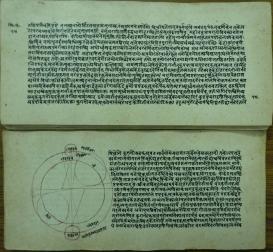This project investigates the geometrical concepts in Sanskrit astronomy of early modern India (c. 1500 to 1800 CE) as it engaged with Græco-Islamic influences. During the period of Mughal rule (1500 to 1800 CE) in early modern India, traditional Sanskrit astronomers actively engaged with Islamic (Ptolemaic) astronomy for the very first time. The EMESAS project proposes to study the canonical works (siddhāntas) of three Sanskrit astronomers from the early seventeenth century, namely, the Sarvasiddhāntarāja (1639 CE) of Nityānanda, the Siddhāntasārvabhauma (1646 CE) of Munīśvara, and the Siddhāntatattvaviveka (1658 CE) of Kamalākara. The aim of this study is to identify various exogenous “knowledge elements” like computational paradigms, astronomical models, geometrical reasonings, cosmographical descriptions, and mythological narratives that are found in these texts. The original arguments offered by the authors to validate or repudiate these Græco-Islamic ideas give us an opportunity to examine the conceptual, computational, and cultural considerations that determined the admission and assimilation of foreign knowledge in Sanskrit mathematical practices of medieval India. In bringing together the fields of history of astral sciences and philosophy of science with Indology, the EMESAS project expects to pioneer the study of mathematical works of antiquity as literary, cognitive, and technical accounts in the history of scientific practices of different cultures.

Project
(2018-2019)
